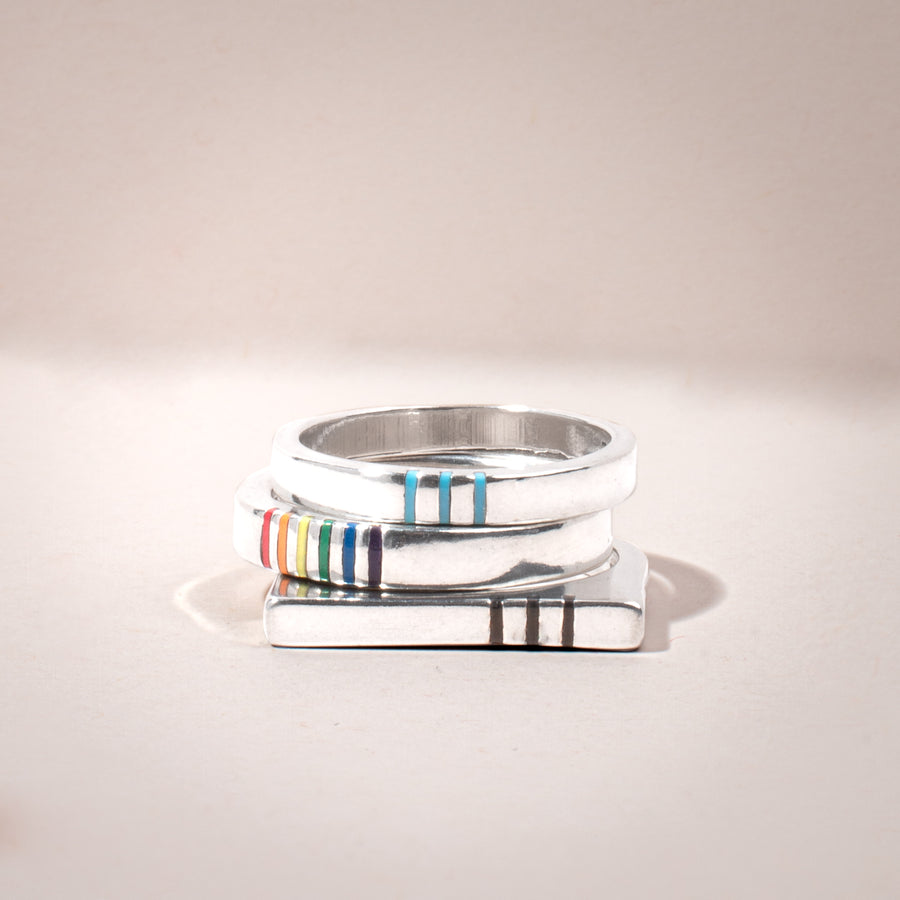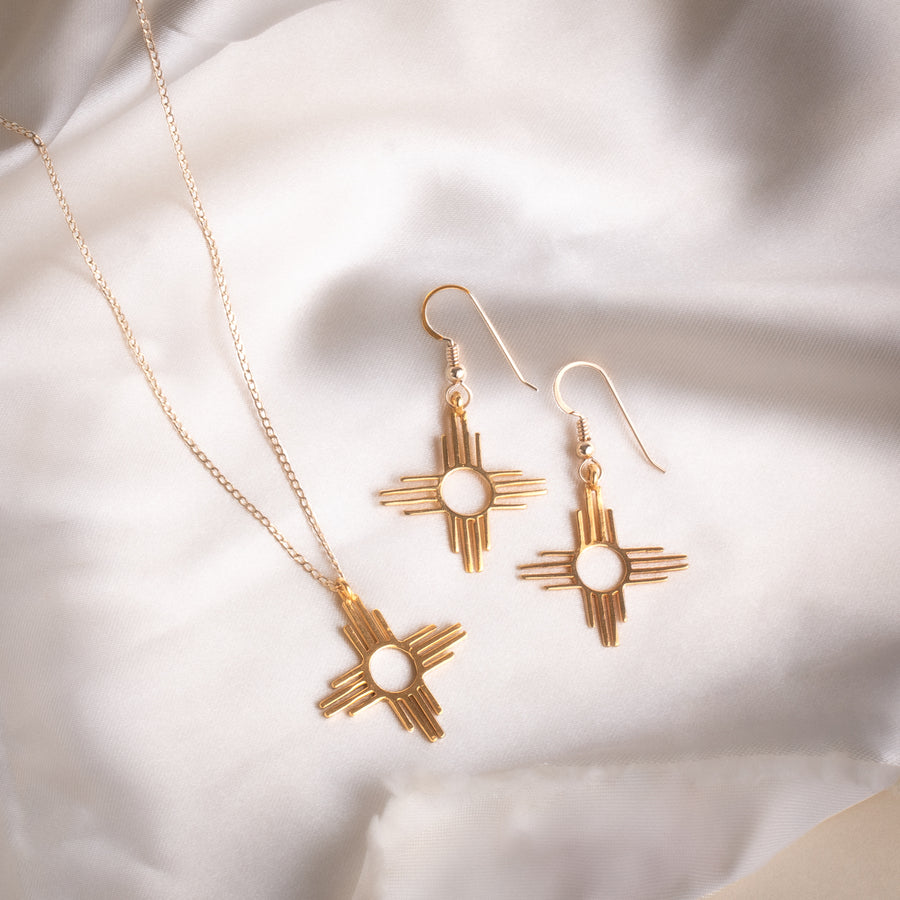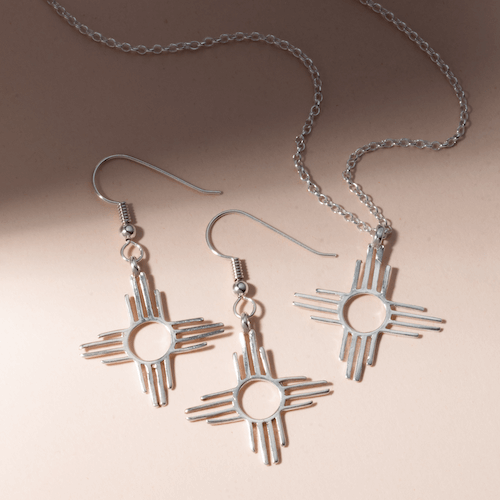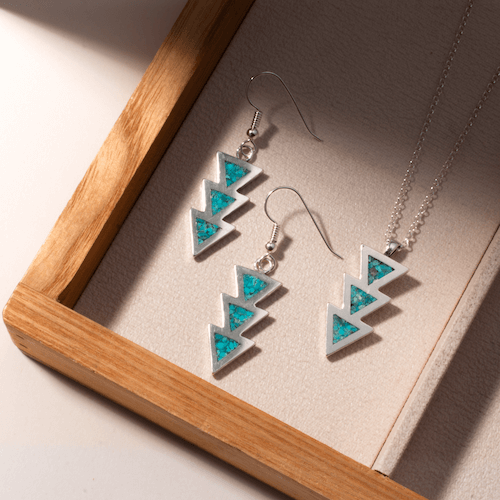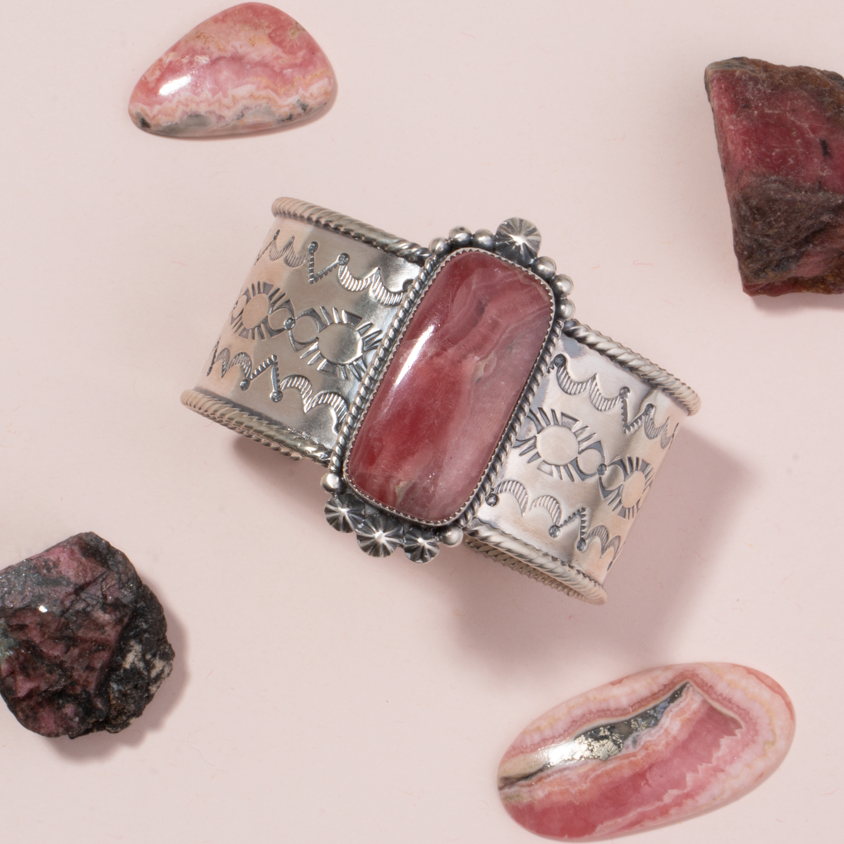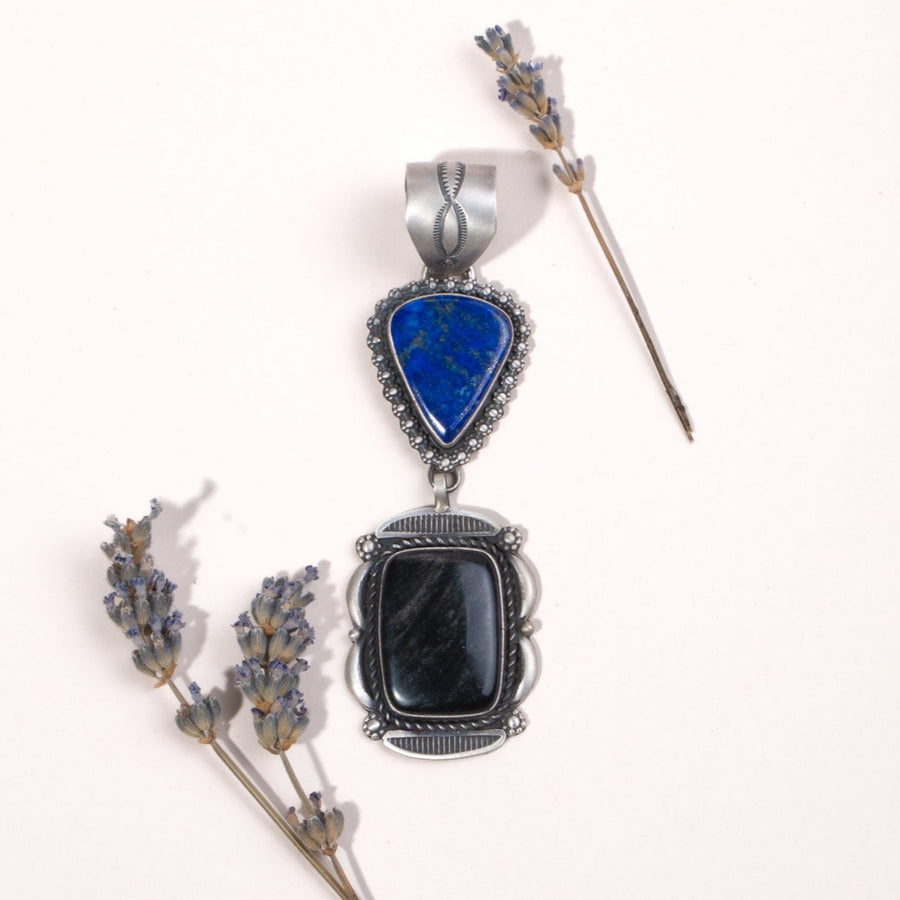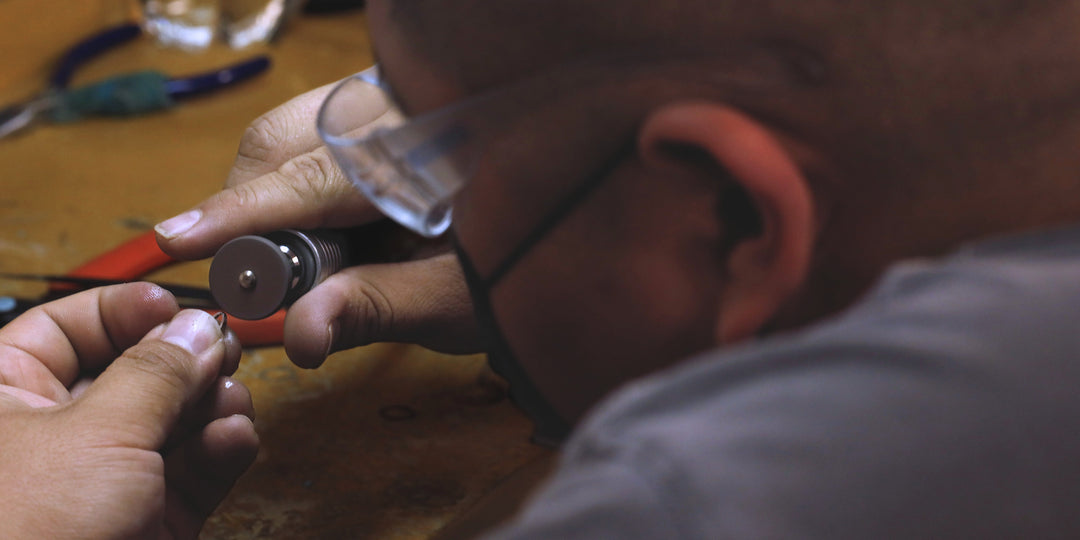The Origin of Overlay Style Native American Jewelry
Native American jewelry is a reflection of culture, tradition and artistic design. It is also the result of historical input. Many styles of jewelry have a backstory which reveals the influences the individual tribe faced. Such is the case with the jewelry style known as overlay.

Overlay is a style first practiced by the Hopi. Early Hopi jewelry used stones such as turquoise along with wood, shells and seeds. Contact with the Spaniards who came to claim the southwest for the Spanish Crown resulted in the Hopi, along with other area tribes, learning the art of silversmithing. This became an addition to their style of jewelry, one for which they would gain much renown.
In the beginning the silver pieces were stamped or cast. As time went on Hopi artists began to put their own unique talent into their work. The 1930’s and 1940’s saw these artists create the development of a new style which would come to be known as overlay.

Two silver overlay wave bracelets by Hopi artist Tim Mowa
Overlay jewelry consists of two pieces of silver soldered together. The top layer has a design drawn and cut out by hand on it. When the design is complete, the top layer is soldered to a second layer of silver, which will show through the open areas of the design on the top. This second layer is then textured in those open areas of the design with a punch and a hammer. The textured piece is then trimmed and blackened to provide contrast within the design. It is then buffed or polished for a lustrous finish. Those artists who choose to combine gold and silver in one overlay piece generally use the silver as the base layer.
As the new Hopi style gained in popularity it began to be copied by other tribes. There are some distinctive differences which may tell whether a piece is from a Hopi artist or not. Hopi designs tend to contain more symbolic figures rather than stylized realistic ones. Hopi pieces have etching in the open areas of the design. And since the sun is an important symbol in Hopi life it is often used in the designs.
Overlay style is an example of how each group used the skill of working silver that they were taught to reflect their own beliefs and culture. As a traditional people, Hopi artists used those symbols and figures which had meaning in their culture to create items of beauty. Each one is a testament to the long history of the Hopi.
Hopi overlay jewelry became highly sought after collectors around the globe. Because of the popularity of this style, Neighboring tribes, such as the Navajo, began to incorporate the overlay technique into their own designs. The Navajo are well known for telling a story with their jewelry. The overlay technique adapted perfectly for the purpose displaying pictorial images on jewelry. This became what is known today as the “storyteller overlay” style.

Resources:
http://www.southwesttraditions.com/Hopi_Jewelry/hopi_jewelry.html
https://www.southwestsilvergallery.com/HopiIndianJewelry.asp
